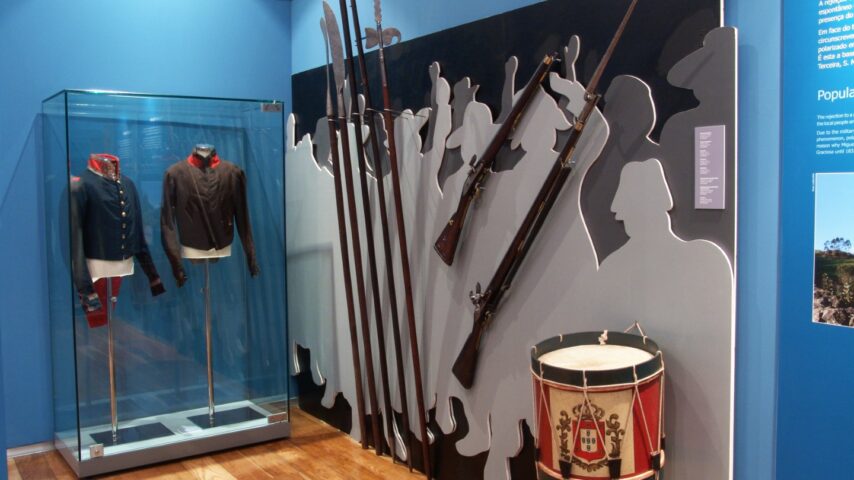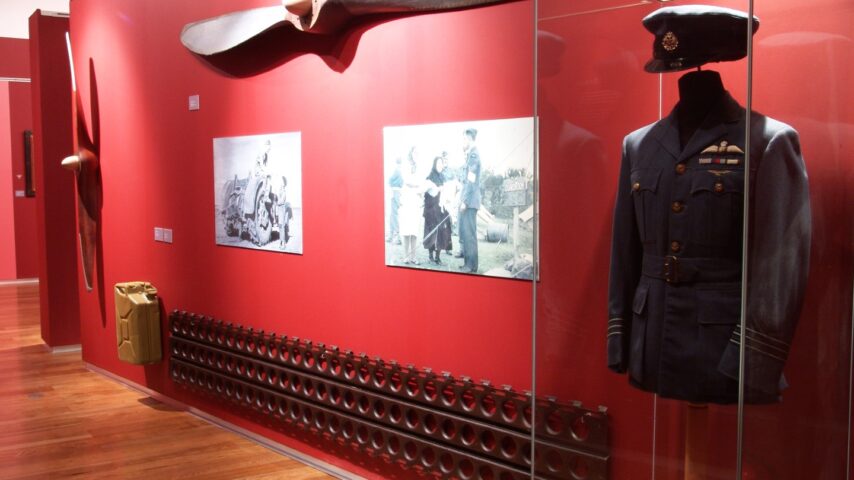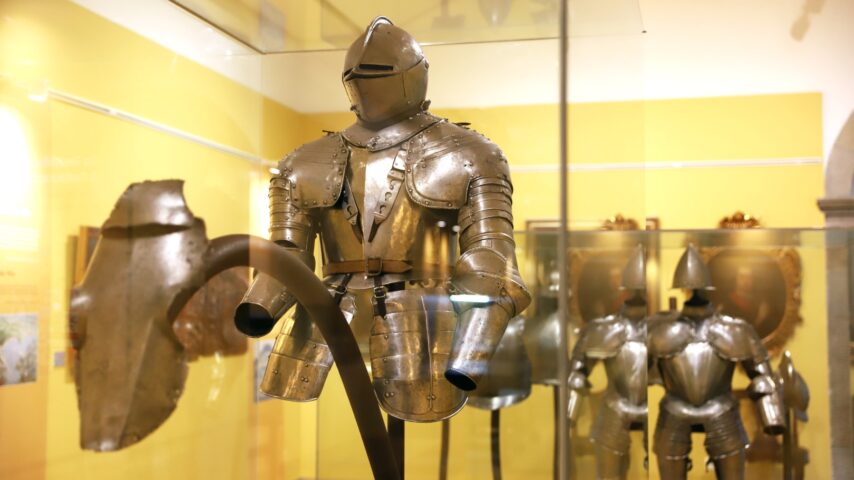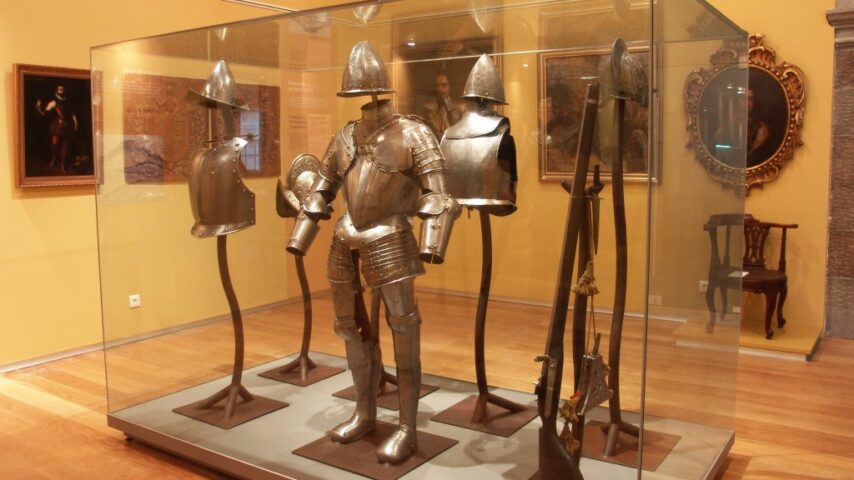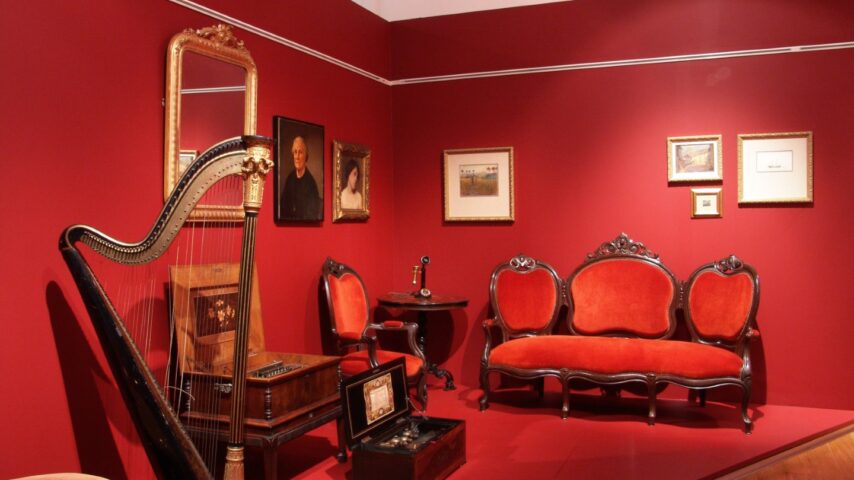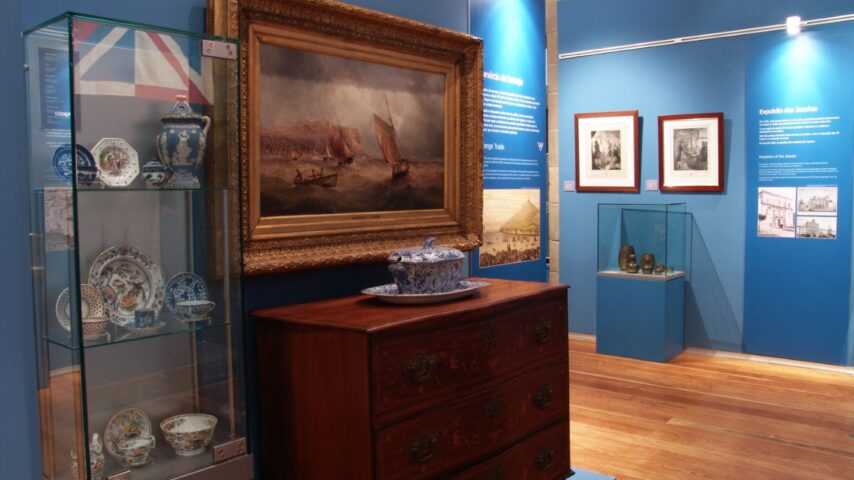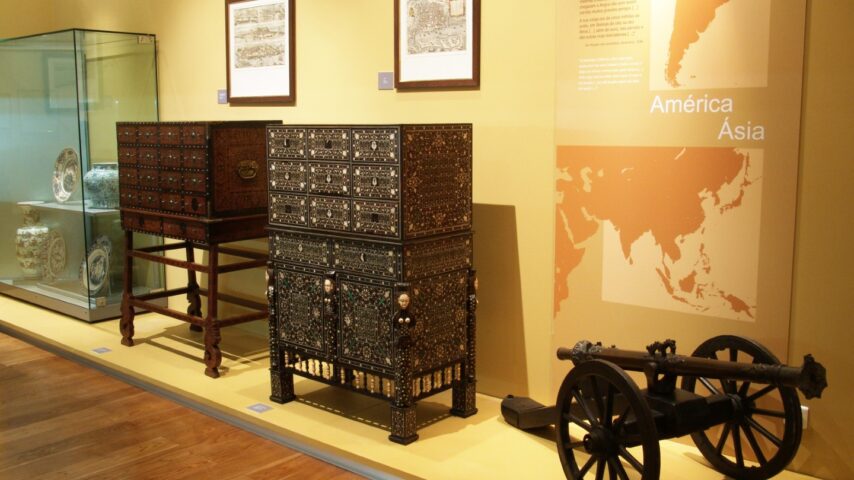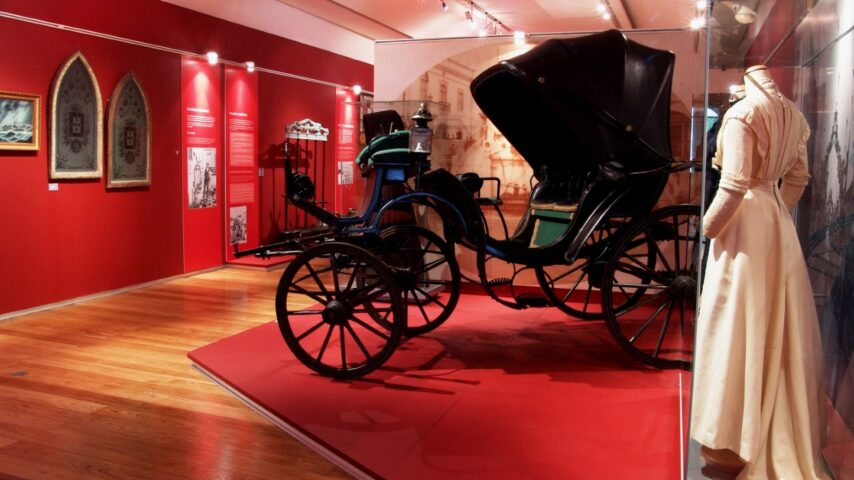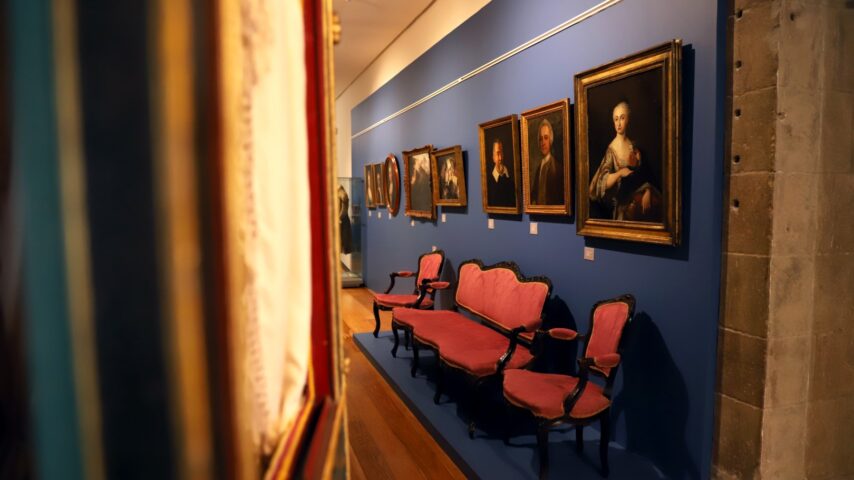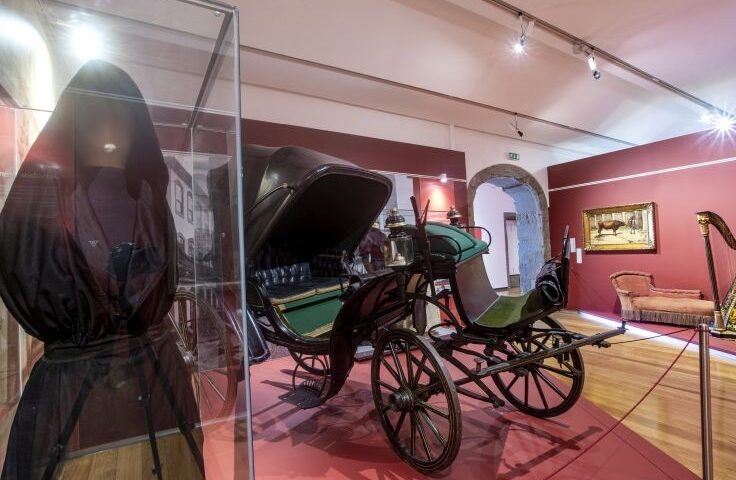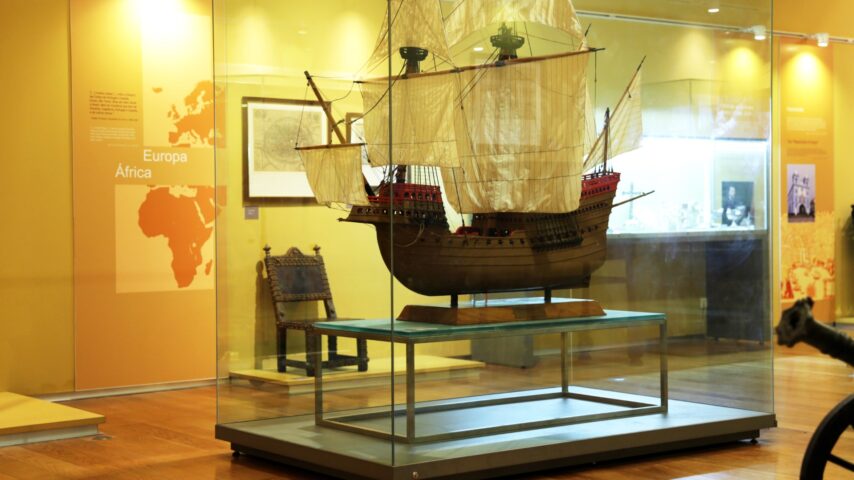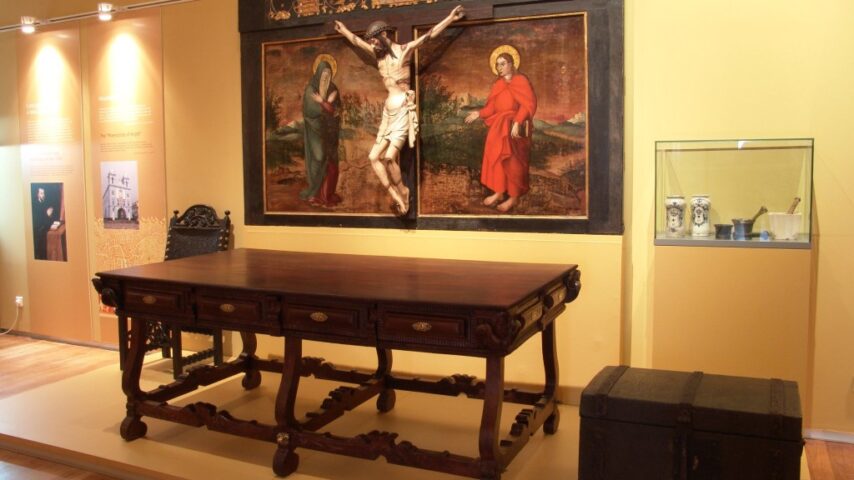São Francisco Building
From Sea and Land… a story in the Atlantic
This exhibition is the MAH’s main narrative and takes place over four periods, ranging from the discovery and settlement of the islands to the present day. It aims to delve deeper into the culture and history of Terceira Island and the Azores through the institution’s most significant and valuable pieces.
The exhibition project takes the archipelago’s geostrategic role as its starting point and links it to the supraregional plans of the country and the world, so as to encompass other dimensions considered fundamental to understanding the island’s historical and cultural totality.
Four expository moments stand out:
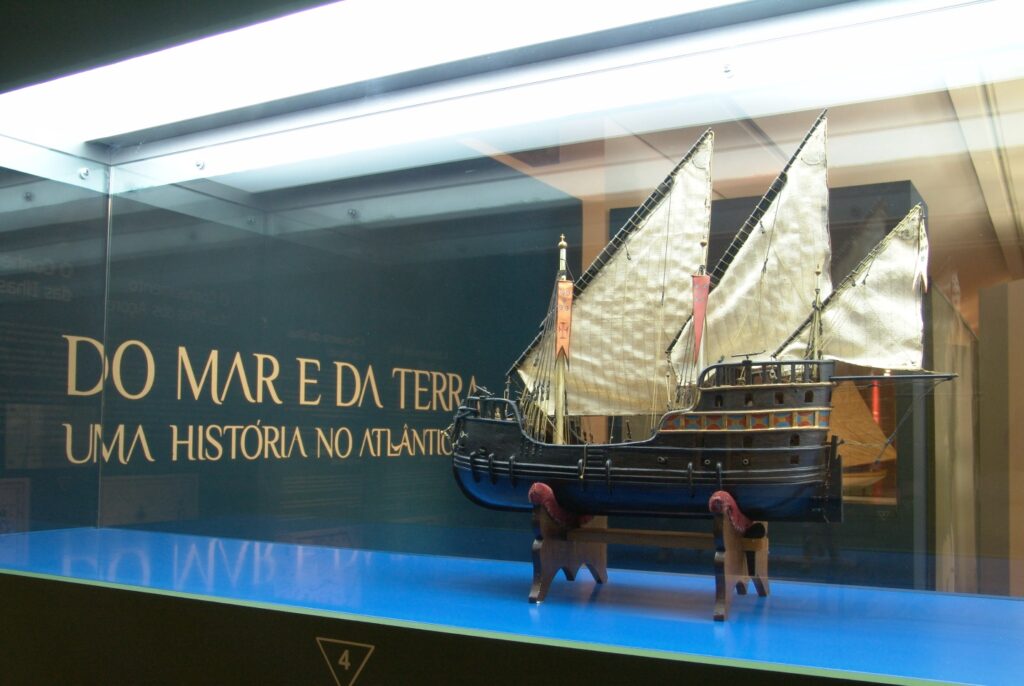
- Moment 1
Knowledge of the Azores Islands
At the beginning of the 15th century, knowledge of the world was limited and fragmented, and the medieval image of the Earth, based on a synthesis of biblical and Greco-Latin elements, was still a reality.
Portugal – a crossroads of Christian, Islamic and Jewish civilizations, and an independent state since the 12th century – began to strengthen its maritime and fishing tradition and to create the conditions for the European Expansion of the 15th and 16th centuries, a phenomenon of the opening up of the world and globalization that it would lead.
By the middle of the 15th century, the first seven islands of the Azores had been discovered (1427), and settlement began in 1439. Flores and Corvo were discovered in 1452. The archipelago has an economy based on cereal cultivation and livestock breeding, cyclically combined with market-oriented products such as wheat, pastry, oranges and milk.
The Azores’ geographical position makes it an indispensable base for maritime navigation.
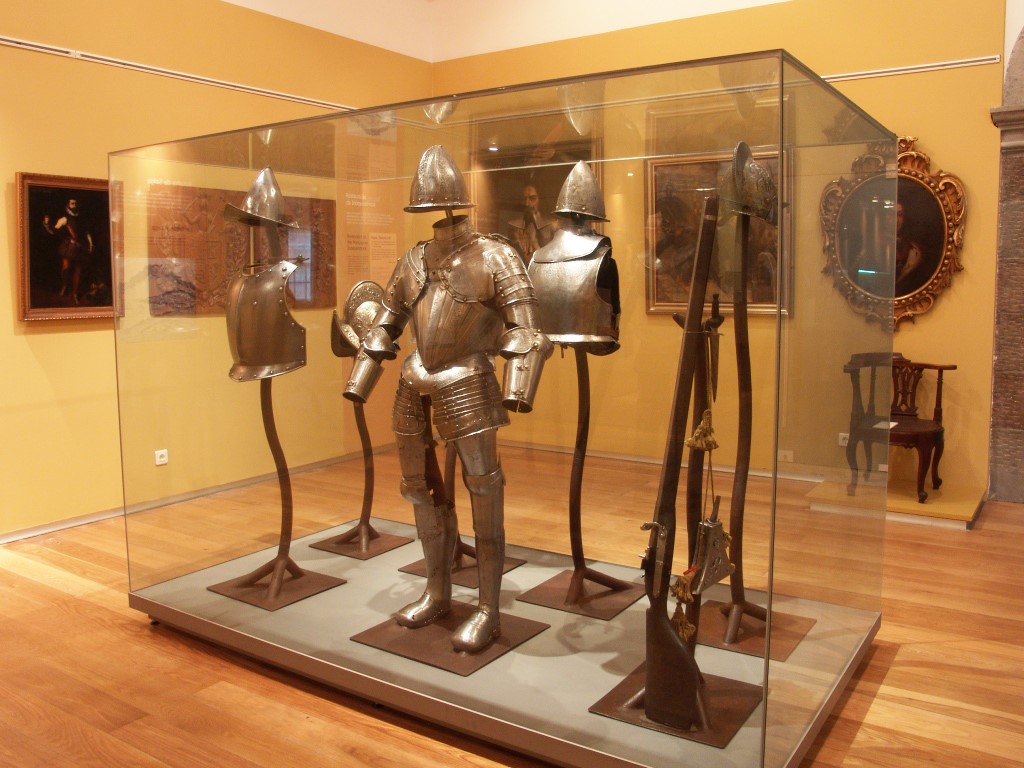
- Moment 2
Angra, Universal Scale of the Setting Sea
In the 16th century, Angra developed as a support and distribution center for products coming from the East and West Indies, within the framework of building an Atlantic economy.
The wealth generated allowed the city to grow with a Renaissance urban plan, recorded in the famous letter by Jan Huygen Van Linschoten, which still characterizes it today.
The importance of Angra and the Azores in the 16th-17th centuries was marked by pressure from the maritime powers of the north and is revealed in Philip II’s efforts to conquer Terceira Island.
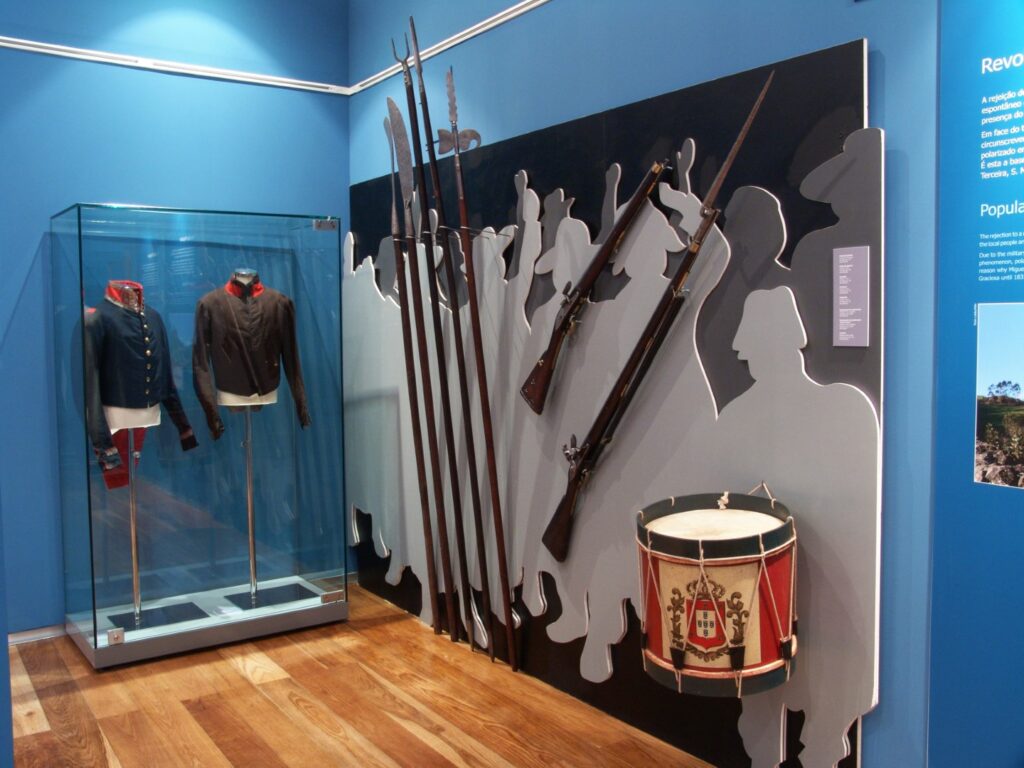
- Moment 3
From General Captaincy to Liberalism
In the 100 years between the creation of the Captaincy General and the end of the Liberal Struggles, the Azores underwent changes that have lasted and profoundly altered island life.
The creation of the Captaincy General, in 1766, at the proposal of the Marquis of Pombal, with its headquarters in Angra, corresponds to the concern to reorganize the political-administrative regime, attributing vast powers to the Captain General.
In turn, the troubled period of the Liberal Struggles (1820-1834), with the installation on Terceira Island of the Regency of the Kingdom and the arrival of successive waves of emigrants who supported it, led to violent clashes with the local population, as the social and cultural environment was not conducive to adherence to the ideals of Liberalism.
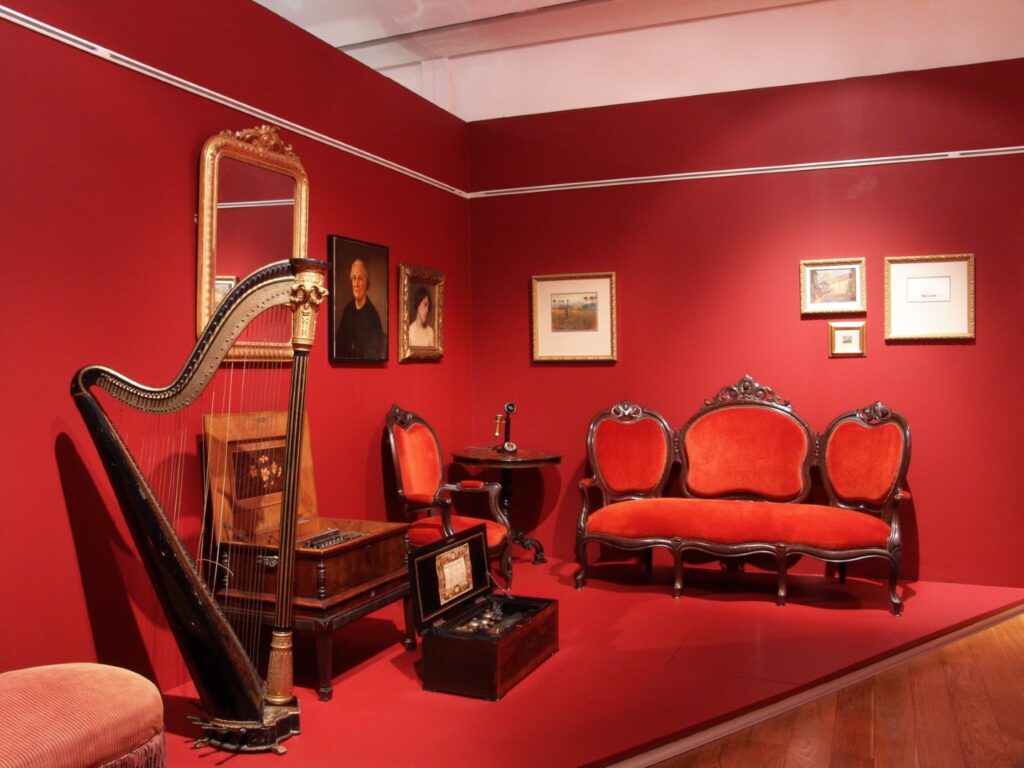
- Moment 4
The Formation of the Contemporary
Azorean life does not escape the influence of the great events of the 19th and 20th centuries. All the movements that have had an impact on the country and the world have had their repercussions on the islands.
The social, economic and cultural reality is characterized by the predominance of the primary sector, emigration, backwardness and the persistence of traditional systems and values. However, the inventions that mark contemporaneity arrive on the islands and, little by little, change the island way of life.
The Adjacent Islands re-emerged into a new era with the revolutionary movement of April 25, 1974, and for the first time a true Autonomy was enshrined in the Constitution.
The strategic importance of the Azores, due to their geographical location, became especially evident in the 20th century, due to the world conflicts, during which these islands once again acted as a strategic point of control in the Atlantic.
